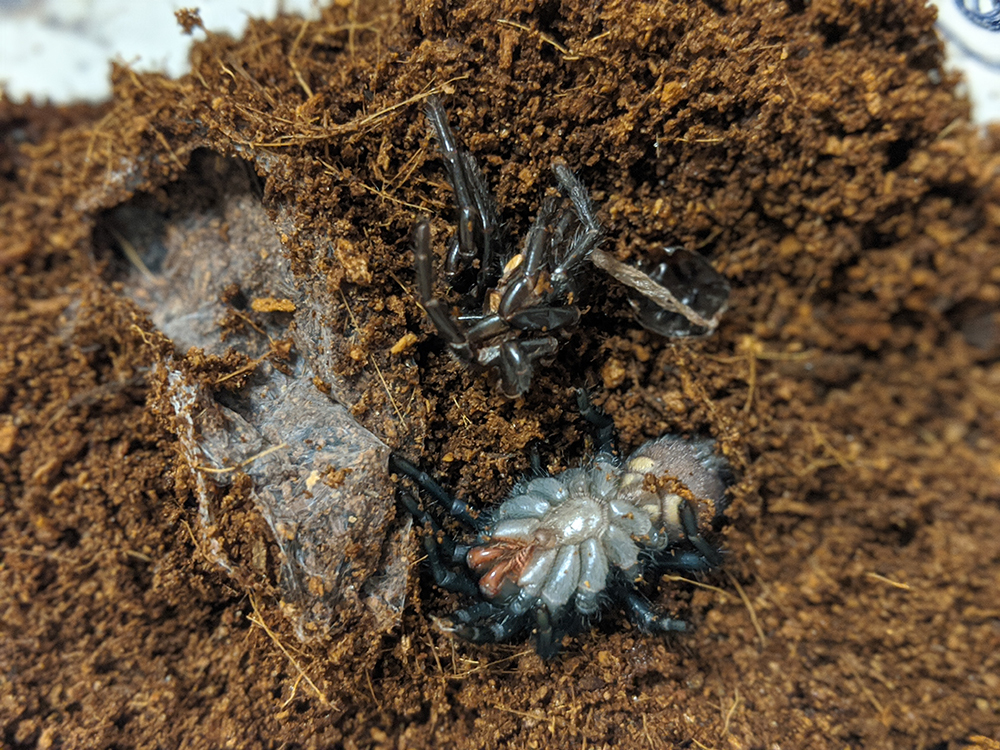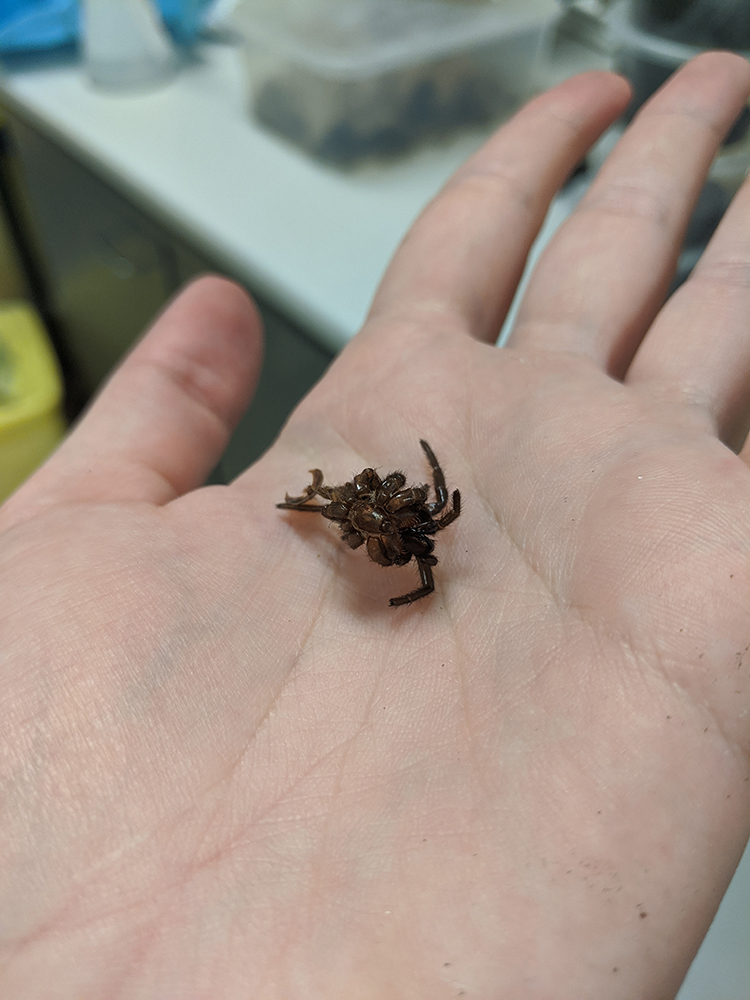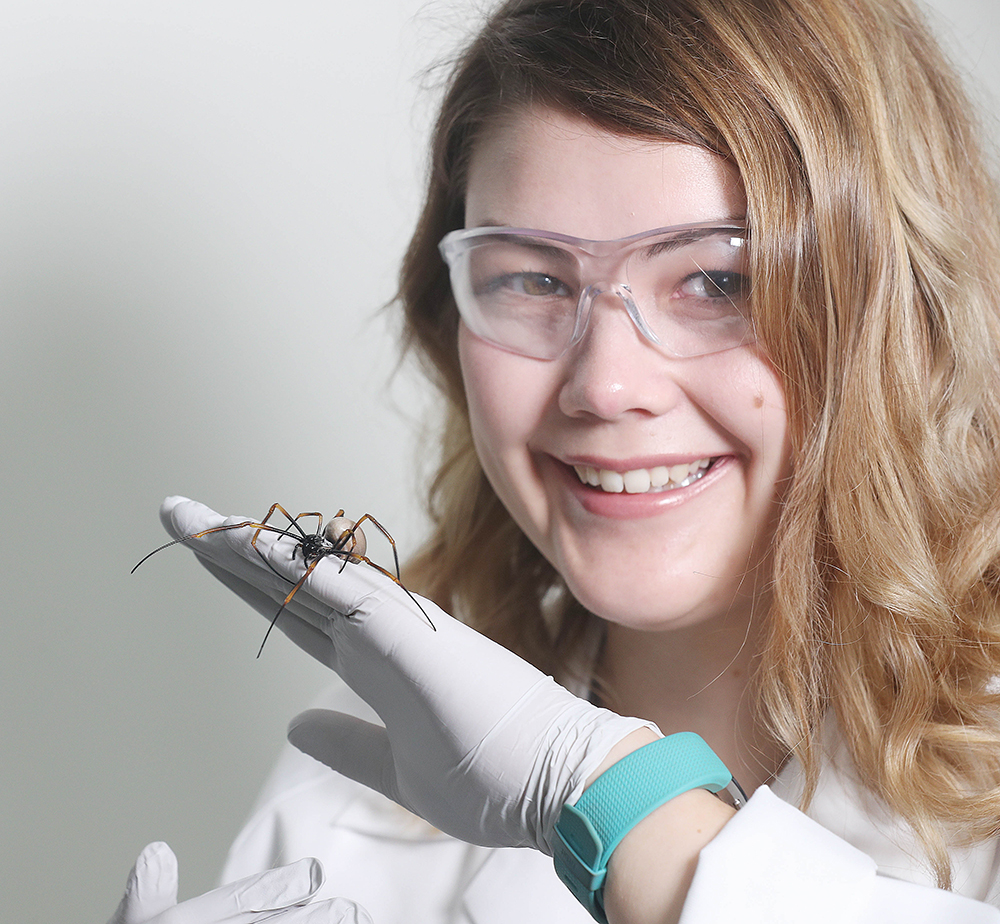The Sydney Funnel-web spider is considered the world’s deadliest spider—but even lethal venomous spiders have a moment of vulnerability when they moult.
Recently I happened to catch the rare moment when one of our Sydney funnel-webs (Atrax robustus) was moulting—shedding his outer layer, his exoskeleton.
During this time, the spider is at its most vulnerable, with a soft and squishy body and an inability to run or bite—making them an easy target for predators.
Moulting is a risky business

I’ve been working with spiders for five years, and this is the first time I’ve been lucky enough to see moulting in action—probably because at this risky time, spiders usually hide.
Young growing spiders moult frequently, up to once a month depending on food availability. Older spiders only moult once every year or two.
Funnel-web spiders can live for a long time, possibly up to 20 years, the oldest spider recorded was a 43 year old trap door spider.
What is moulting?
Spiders are invertebrates. That means that they don’t have a skeleton like we do. Instead they have an exoskeleton. This is a hard, protective outer layer made of overlapping layers of chitin (a natural polymer) and protein.
While the exoskeleton protects the spider, it’s also too hard and inflexible to allow the spider to grow–so they have to shed it.
How do spiders shed their exoskeletons?
Spiders grow a second exoskeleton underneath their current one.
When the time comes, they find a safe place to hide from predators—for funnel-webs this is in their burrows underground.
They shed absolutely everything—even their fangs.
The spider expands the top part of its body so much that it cracks open the old exoskeleton, like the Hulk bursting out of his clothes.

Spiders expand by pumping their heart rate up so much that their blood (called haemolymph) fills their cephalothorax – this body part is the spider’s head and thorax fused together.
Once the old exoskeleton is cracked, the spider pushes itself out with its strong legs.
What happens after moulting?
Over the next few hours to days, the spider grows into its new exoskeleton and it hardens.
The time this takes depends on the type and size of spider.
Moulting is a very exhausting process, so we make sure that our spiders have plenty of water, food and a safe environment to get through it.
The tables can turn at feeding time, when our spiders are defenceless during their meal of crickets, which can eat a moulting spider.
We're discovering the unknown in venom
At the Institute for Molecular Bioscience, we study the spider venom for new medical and biotechnological applications—everything from eco-friendly insecticides, to new stroke treatments and new antiparasitic drugs.
Watching the spiders moult is a reminder that while some of us may be scared of them, even spiders have a moment of vulnerability!


